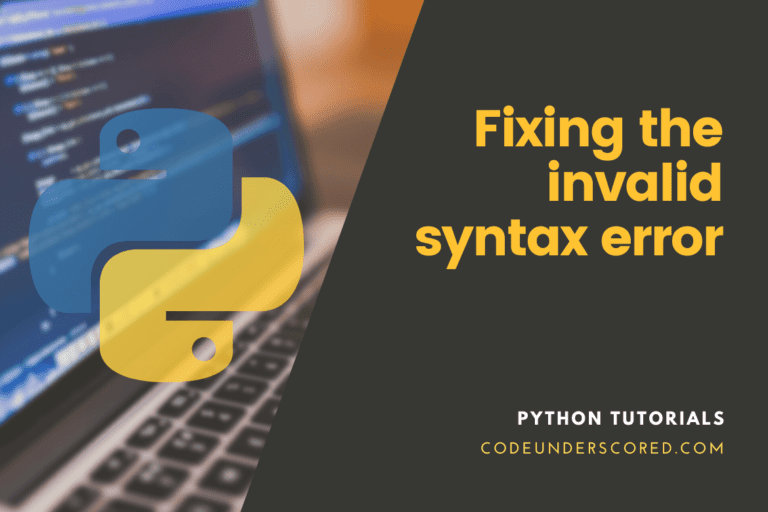Let’s face it: There are many different ways to use Python in your coding projects. And that’s not going away anytime soon. As developers increasingly adopt Python, we see more and more opportunities to incorporate it into our coding projects. How do you make sure you’re using it optimally? With this guide, of course! Get ready to get your hands dirty with some useful tips and tricks on using Python double slash.
Python uses the double slash (//) operator for various reasons. This operator is used to get the division result, for example. An integer or a floating-point number can result from dividing two numbers. The single slash (/) and double slash (//) operators are both used in Python 3+ to acquire the division result containing the floating-point value.
One distinction is that the single slash operator can return the fractional part of the floating-point result, whereas the double slash operator cannot. The double slash (//) operator is also used to define the window path value internally. This tutorial demonstrated two use of the double slash (//) operator.
Python single slash (/) and double slash (//) operators divide a number
To check the difference between the output of the single slash and double slash operators for the division operation, create a python file containing the following script. In the script, the divider value is set to 5, and the divisor value is set to 2. After running the script, the division result and the result type for 5/2, 5//2, 5//2.0, and 5.0/2 are printed.
# Define the divider value
num1 = 5
# Define the divisor value
num2 = 2
# Divide using a single slash
result = num1 / num2
print("The division result of %d/%d = %0.2f" % (num1, num2, result))
print("The type of the result", type(result))
# Divide using double slash
result = num1 // num2
print("The division result of %d//%d = %0.2f" % (num1, num2, result))
print("The type of the result", type(result))
# Divide using double slash and float divisor value
result = num1 // float(num2)
print("The division result of %d//%0.2f = %0.2f" % (num1, num2, result))
print("The type of the result", type(result))
# Divide using double slash and float divider value
result = float(num1) // num2
print("The division result of %0.2f//%d = %0.2f" % (num1, num2, result))
print("The type of the result", type(result))
After running the script, the following output will show. The 5/2 result is correct, and the return type is float. Because the return type is an integer, the result of 5//2 is inappropriate. The output has been omitted from the fractional component. The return type is float, and the result of 5//2.00 is inappropriate. This output has likewise been stripped of the fractional part. The return type is float, and the result of 5.00//2 is inappropriate. This output has likewise been stripped of the fractional part.
Replacing the path specified by the double slash (//) operator
In Windows, the reverse slash (\) is used to define the path, while in Linux, the slash (/) is used to define the route. The reverse slash (\) is stored by the double slash when any windows path is defined in a python variable (\\). To define the path in Linux format, the double slash (\\) is converted to a forward slash (/).
Make a python file with the following script, which assigns a windows path to a variable and substitutes the path’s double slash with a forward slash (/). After running the script, the original and updated paths are printed.
# Define a path
pathVal = r"C:\Windows\System\Speech"
# Print the path value
print("The original path value:\n", pathVal)
# Replace the path with forward-slash(/)
updated_path = pathVal.replace("\\", "/")
# Print the updated path
print("The updated path value:\n", updated_path)
After running the script, the following output will show. The output demonstrates that the Windows path has been translated to a Linux format.
floor division against division
When you divide with the / operator, for example, 13/2, the result is 6.5, but when you divide with //, the result is 6. The output of ordinary division is always a float, whereas the output of floor division is always a float if one of the operands is a float.
As an example, consider the following:
print("The normal division")
print(4 / 2, "\tis a float.")
print("\nRepresentation of a Floor division")
print(23 // 4, "\tis an int.")
print(23.0 // 4, "\tis a float.")
Representation of floor division using Negative numbers
When an operand is negative, the greatest integer less than or equal to the result of ordinary division is returned by floor division. To demonstrate how this works, let’s use the same operands as before:
print(23/ 6) print(23 // 6) print(-23 // 6)
When both numbers are positive, ordinary division returns 3.83, and floor division returns 3 because it’s the greatest integer smaller than or equal to. The result of conventional division is when one of the operands is negative. Hence the greatest integer less than or equal to is -3. We’ll look at where floor division might be useful and alternate ways to produce comparable outcomes.
Use cases for floor division
When using Python, you’ll frequently see errors indicating that certain functions are incompatible with floats. Consider the following scenario: You wish to use the range function to find the quotient of two numbers:
for val in range(25 / 5):
print(val)
To make our program function, we must first convert the quotient to an integer type, which we can do with the / operator:
for val in range(25 // 5):
print(val)
When indexing lists, you may also want to utilize the floor operator:
x_val = list(range(100)) x_val[len(x_val) / 10] Using the floor division operator is one approach to solve this: x_val[len(x_val) // 10]
Different ways used instead of //
If you’re working with messy data, you can find yourself working with datasets that contain both integers and floats.
In some cases, the / /operator will give mixed results, with floats and integers output. If your software relies on numbers, utilizing the // operator will necessitate additional steps to achieve a consistent result.
There are a couple more methods for manipulating the quotient of two numbers to make your application work properly. If you don’t always want to round a number down, for example, adopting several procedures can give you greater control over the outcome.
math.ceil()
We can also use math.ceil() instead of math.floor(), which will always round up to the nearest whole number rather than down. Consider the following scenario:
math.ceil(23 / 6)
math.ceil, like math.floor, always returns an integer-type result, independent of the supplied data types. Because of math.ceil rounds negative numbers up, the result of math.ceil(-23 / 6) is -3.
int()
You can cast a float to an int for a quick fix. When you pass a float to int(), the result is an integer with everything chopped off after the decimal point of the input float. In the example below, 23/6=3.83. Casting to an integer will remove the .83.
int(23 / 6)
int() works similarly to math.floor(), with the exception that int() rounds negative numbers up rather than down.
print(math.floor(-23/ 6)) print(int(-23 / 6))
round()
We may also use round() to round variables and then report the result as an integer instead of using the math methods. The distinction is because round() uses traditional rounding, which means that every decimal greater than 5 is rounded up. The following code explains how to use round():
round(63.5)
We may also indicate how many decimal points should be rounded off the input. The following example explains how to round the result of 23 divided by 6 (3.83) to one decimal place:
round(23 / 6, 1)
Adding a 1 after the comma indicates that the result should contain one decimal point. However, any number is used. We could, for example, round the value of pi to nine decimal places.
math.floor()
By rounding its argument to the nearest integer, math.floor() gets the same effect as the floor division operator.
The fact that math.floor() always returns an integer, regardless of the supplied data type, is a significant difference. Math.floor() is more useful when working with integers and floats since it produces more consistent results. The example below demonstrates how to floor the result of regular division:
import math math.floor(23 / 6)
Math.ceil, like math.floor, always returns an integer-type result, independent of the supplied data types. Because math.ceil rounds negative numbers up, the result of math.ceil(-23 / 6) is -3.
Example: Using a single slash and double slash in Python3
However, in Python 3, we can use a single slash (‘/’) to get a float answer. In Python, we must use the double slash (“//”) to receive the response in integer.
# Single Slash #Float Division Positive Value a=5 b=2 print(a/b) # Float Division Negative Value a=-5 b=2 print(a/b) # Double Slash # Integer Division Positive Value a=5 b=2 print(a//b) # Integer Division Negative Value a=-5 b=2 print(a//b)
Conclusion
This tutorial demonstrates the use of the double slash (//) operator in Python 3+ by using simple examples to demonstrate the functions of this operator.
Python supports two types of division: floating-point and integer division, sometimes known as floor division. In Python, we use a double slash if we want our answer to having decimal values, and we use a single slash if we wish our answer to be the floor value (integer). The closest (must be less) or equal value to the supplied number is called the floor value.
If we use a single slash (floating division) like this – 7/2, we get 3.5; but, if we use a double slash like this – 7//2, we get 3. As previously stated, ‘3’ is less than ‘235.’







